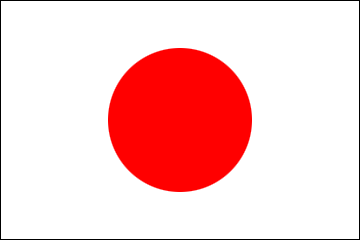On Remembrance Day
 Today, as the sixth part of the series, the office would like to tell you about the Japanese Canadian who fought in the First World War. On Remembrance Day last year, a member of this office, while strolling at the Field of Crosses, which had been put up along the Memorial Drive, Calgary, came across to a cross dedicated to the late Private Masakichi Otani of 10th Battalion, who died at the age of thirty-eight during the War (see the right picture).
Today, as the sixth part of the series, the office would like to tell you about the Japanese Canadian who fought in the First World War. On Remembrance Day last year, a member of this office, while strolling at the Field of Crosses, which had been put up along the Memorial Drive, Calgary, came across to a cross dedicated to the late Private Masakichi Otani of 10th Battalion, who died at the age of thirty-eight during the War (see the right picture).
 The project organizer later said that 19 crosses among 3,500 were dedicated to the Japanese Canadian, who died during the First World War. This year, the office member found two other crosses, which were dedicated to the late Private Choichi Nakamura of the 50th Battalion, who died at the age of thirty, and the late Private Hikoi Narita of the 50th Battalion, who died at the age of twenty-nine. (The picture above shows this year’s Field of Crosses.)
The project organizer later said that 19 crosses among 3,500 were dedicated to the Japanese Canadian, who died during the First World War. This year, the office member found two other crosses, which were dedicated to the late Private Choichi Nakamura of the 50th Battalion, who died at the age of thirty, and the late Private Hikoi Narita of the 50th Battalion, who died at the age of twenty-nine. (The picture above shows this year’s Field of Crosses.)
The Canadian government’s website says that their places of origin are Japan’s prefectures: Okayama, Kanagawa, Fukuoka, Tochigi, Kumamoto, Hyogo (City of Kobe), Hiroshima, Miyagi, and Mie. While acknowledging that they rest at the Canadian National Vimy Memorial, France forever and there is a Japanese Canadian War Memorial at Stanley Park, Vancouver, the office expresses its sincere gratitude to Calgarians who remember these Japanese Canadians and pay tribute to them every year.
 A Display of the Military Museums, Calgary (right) tells us that 228 Japanese Canadians (another source says 222) joined the-then Canadian Expeditionary Forces and landed in Europe. More than half of them belonged to the Calgary-based 10th and 50th Battalions and they were originally enlisted in Medicine Hat (south-eastern Alberta), Swift Current (south-west Saskatchewan), McLeod Valley (east of Edmonton, Alberta), Crowsnest Pass
(south-west Alberta).
A Display of the Military Museums, Calgary (right) tells us that 228 Japanese Canadians (another source says 222) joined the-then Canadian Expeditionary Forces and landed in Europe. More than half of them belonged to the Calgary-based 10th and 50th Battalions and they were originally enlisted in Medicine Hat (south-eastern Alberta), Swift Current (south-west Saskatchewan), McLeod Valley (east of Edmonton, Alberta), Crowsnest Pass
(south-west Alberta).
 Earlier in 1915, in British Columbia, where many Japanese Canadian lived, the Canadian Japanese Association tried to organize Japanese Canadian volunteers to serve at the Canadian forces. They had two objectives. The first was to demonstrate their responsibility as Canadians, and then, to win the right to vote. Though the demand for reinforcements increased due to prolonged war, British Columbia’s recruit offices were still reluctant to enlist Asians, including Japanese Canadians. More than 200 Japanese Canadians (the first generation), to avoid this difficulty, crossed the Rocky Mountains to go to Alberta for enlistment. In addition, as there were Japanese communities in southern Alberta, there are Japanese names on a cenotaph in Raymond (the right picture), and so it is sure that some Japanese Canadian who lived in southern Alberta also enlisted.
Earlier in 1915, in British Columbia, where many Japanese Canadian lived, the Canadian Japanese Association tried to organize Japanese Canadian volunteers to serve at the Canadian forces. They had two objectives. The first was to demonstrate their responsibility as Canadians, and then, to win the right to vote. Though the demand for reinforcements increased due to prolonged war, British Columbia’s recruit offices were still reluctant to enlist Asians, including Japanese Canadians. More than 200 Japanese Canadians (the first generation), to avoid this difficulty, crossed the Rocky Mountains to go to Alberta for enlistment. In addition, as there were Japanese communities in southern Alberta, there are Japanese names on a cenotaph in Raymond (the right picture), and so it is sure that some Japanese Canadian who lived in southern Alberta also enlisted.
 Later, they fought at the European front in a dire condition, including at Vimy Ridge, France, and fifty-four died. (Right: a roll of honour dedicated to fallen Japanese Canadian during the First World War.) Sergeant Masumi Mitsui, born in Kokura, Fukuoka Prefecture, and the other thirteen were bestowed medals to acknowledge their contribution at battles such as the Battle of Vimy Ridge.
Later, they fought at the European front in a dire condition, including at Vimy Ridge, France, and fifty-four died. (Right: a roll of honour dedicated to fallen Japanese Canadian during the First World War.) Sergeant Masumi Mitsui, born in Kokura, Fukuoka Prefecture, and the other thirteen were bestowed medals to acknowledge their contribution at battles such as the Battle of Vimy Ridge.
(Sergeant Mitsui was discharged from the force in April 1919. Later, he was active to obtain Japanese Canadian veterans’ right to vote. At the time of the Second World War, he strongly condemned the federal government’s Japanese Canadian internment policy. He passed away in Hamilton, Ontario in 1987. His grandson is Mr. David R. Mitsui, the President of the Edmonton Japanese Community Association (EJCA) (2013-16) and the President of the National Association of Japanese Canadians(NAJC).)
